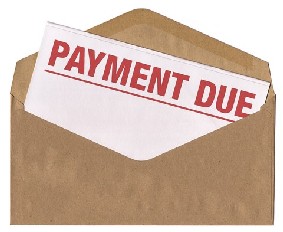I hope my previous post got you more interested in taking a longer look at building a Business-to-Business (B2B) startup.
If you’re interested in plunging into one, here are 5 of the most crucial lessons I’ve garnered in building B2B’s for almost one decade now (Can’t believe it!):
1) Doing Lean Startup? You cannot use a traditional “MVP”
If you aren’t familiar with Lean Startup Methodology, then please buy Eric’s book as soon as you finish this post. Essentially, the book says that you have to validate your assumptions about the product and the market systematically before you spend money on building.
Specifically, it suggest building a “minimum viable product.” This is basically a bare-bones version of your eventual product (which won’t cost you much) that you can show to potential clients in order for you to get valuable feedback which you can then use to develop the product further. Typically, this “MVP” would consist of just approximations of the actual product that could show potential clients. Here are 10 examples.
You CANNOT do an “approximation” with a B2B when you’re selling to a corporation. Companies will simply not pay for anything which isn’t ready. They cannot risk it. (Unless the CEO is your brother or its a smaller company and your product is something they desperately need)
(And no, application developers, you won’t be able to fool them with a wireframe demo – they will ask you to click on everything to see whether they work)
So yes, you do need to spend earlier on product development than you would do on a B2C product.
What you could do to balance this out is to spend more time getting data on the PROBLEM you are trying to solve.
Is it really a problem? What are the specifics? How MUCH is this problem costing companies? What price point would it get bought? Is it a painkiller or a vitamin?
Talk to boatloads of potential customers to get problem validation. Not only does this serve as a data-gathering exercise, but its a customer development exercise as well – you are priming all these people in buying from you (once you have a working product).
2) Remember, you are Selling to 2-3 different people
This is what we quickly found out when I started selling in my first startup, STORM.
We sold an HR product, so we built a pitch to the HR Head. After getting approval from the HR Head? Turns out we then had to present a cost-benefit analysis and present it to the CFO. Then another presentation to the CEO (with the whole EXECOM).
You will need to incorporate the paradigms of different people in the organization you are pitching to.
Usually, you have to pitch to the functional head of the department which will end up using your product. Then, there has to be a pitch to the one who will disburse the funding, which (if your product isn’t a finance product) is likely to be another person. Sometimes, the USERS of your product will differ from the functional head, so you will have to get their approval as well.
Put yourself in the shoes of each of these people and customize your pitch appropriately.
Some questions they WILL think about when doing the buying decision:
How will this help my department?
Will I look bad/get fired if this fails? (this is an underrated one – everyone is thinking of this!)
Can I trust these guys to deliver?
Will this help the bottom line? Can I just accept that proof as gospel?
Will this make me do even more work?
Can this further my career?
3) Be sure you ALWAYS have enough cash on hand for the next 6 months of overhead
I remember when we built STORM, we wanted to pursue a service arrangement wherein we would bill the client every month (instead of a one-time, big-time approach). We figured this was best for cashflow management and put less pressure on sales.
Never did we anticipate that we would get delays of 60-90 days for payment! While we had safeguards in the contract for late payment (stopping the service, steep penalties, etc), we quickly found out it would be very dangerous for us to make good on these penalties, after all they would endanger our relationship with the hand which feeds us.
As a new startup, you would seldom have bargaining power in asking clients to pay on time. As a result, cash flow would usually be worse than you expect.
Plan accordingly.
4) Get a natural networker in your founding team
A rather LARGE percentage of the clients you will land in B2B will be as a result of networking. It helps a lot if you would have someone in your founding team who can network well with MANAGERS in the industry, or better yet, ALREADY has a network.
Why?
Its extremely difficult to do a B2B sale organically.
You know, something like sending an email addressed to the “HR Head,” only you need to send it around 10 times to irritate the HR Head enough that he will ask one of his subordinates to talk to you. Then you will be at the mercy of a person who is 2-3 levels below the actual decision maker. Now you have to follow up with this person around 10 times again so he can tell his boss “these guys are ok to talk to.” Then you will go back to trying to get a meeting with the boss. If you do manage to one day get the HR Head to endorse you, you will now have to do the whole shebang with another department – finance.
This looks like I’m kidding/exaggerating, right?
Easiest way to not get yourself in this pickle? Get endorsed by someone with some authority in the office.
The difference is night and day. A great endorsement can get you right to the decision-maker in your first visit.
Get a networker in your founding team. It’s worth the equity.
5) References are gold. Invest in them.
Pitching to a potential client?
The following is the question companies are MOST EAGER to ask you:
Who are your other clients?
Followed by:
Can we call them?
TRANSLATION: We don’t trust you! You have to prove to me I can trust you!
So – be sure you strategically gather and document references.
First and foremost thing to do here? Always keep your promises. If you do what you promise to do, then your current clients would not hesitate in giving a good recommendation.
Document these and spread them as widely as you can through different mediums. Some quick tips:
A) ASK for references. No one would volunteer them. You have to ask for them. Ask ALL your clients for references. If they delay because they say they don’t have time, then volunteer to MAKE one for them that they can then just validate and accept as theirs.
B) Be creative. You can, for example, give a discount if your client agrees to do a reference video (“these guys are so good!”) to be posted on your website.
c) Create a referral to incentivize your current clients to refer other clients. This can even be an incentive for your current service – for example, for every client they refer (and you land), you could give a 5 percent discount to their current monthly service fee.
5b. Bend over backward for your first client
The very first client is EXTREMELY crucial for a B2B firm. This is for obvious reasons – they will serve as your very first reference. In a very real sense, your survival will most probably hinge on how you perform with your first client.
They are naturally very tricky to land – to work with you means they are subjecting themselves to being the guinea pig.
So do bend over backwards for this first client. Mitigate the perceived risk for them. Give a massive discount (I actually recommend giving it for free, in exchange for detailed reference material).
But aside from pricing, give them your ALL – your ball-busting, never-have-you-worked-this hard, absolute 1000%. Give your first reference something great to talk about.









These are truly valuable recommendations. If anyone is launching a B2b startup, here is a b2b startup directory. checkout http://www.publicityx.com, we have a self-serve model with a quick review cycle. And it’s free!
that’s awesome! Thanks Lucy!
Hi Peter, I’m missing your posts. You must be very busy these days. 🙂
Thanks for the words of encouragement, Might. Post coming up 🙂
Great post. Sounds like we had similar experiences working on startups selling to HR departments. 🙂 I agree that selling a MVP is much harder in B2B, but I would argue that although you won’t fool anyone with a minimal product, you can sell a vision to early adopters.
My business partner actually landed our first customer with an Excel prototype of the product. It’s a story I included in my book ‘Lean B2B: Build Products Businesses Want’. It’s not easy, but it can be done. Thanks for the post.
Great point about the vision. I agree you can sell vision, but the variable now becomes your relationship with your client. If the client has real corporate budget power, you’ve continually proven yourself time and time again to her, and you’ve got a great relationship, then it is possible. But, yeah – pretty hard, eh?
Will check out your book!
The easiest way get in b2b clients is to come in as a FREE tool, and then figure out a model to monetize later after they can’t live without your product.
The most important thing is to get them to use the product, and experience the benefits of it. Works wonders if they can actually “get paid” or make money off your product.
And then the referral or reference kicks in as Peter discusssed. Oh and another I learned was you’ve got to make the management look good on their upper management.
Thanks for sharing this Peter. Just want to add what I experienced onboarding corporate clients and hope this helps a few people. 🙂
Thanks so much for the feedback Chux! Those are some really practical tips (especially making them look good to their bosses)